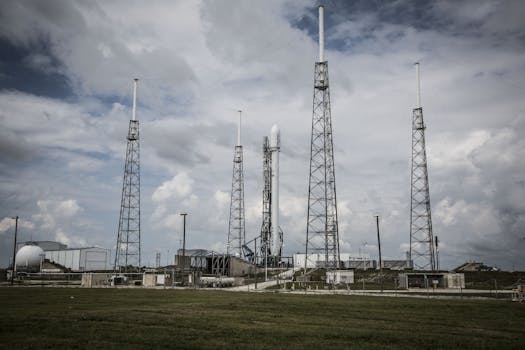
Harnessing the Skies: New Technologies Transforming Satellite Communications
Harnessing the Skies: New Technologies Transforming Satellite Communications is revolutionizing the way we communicate. With the increasing demand for global connectivity, satellite communications have become an essential part of our daily lives. From enabling remote communication to providing internet access in underserved areas, satellite communications play a vital role in connecting the world. In recent years, significant advancements in technology have transformed the satellite communications industry, enabling faster, more reliable, and cost-effective connections.
The integration of new technologies such as High-Throughput Satellites (HTS) and Very High-Throughput Satellites (VHTS) has significantly improved the capacity and efficiency of satellite communications. These advanced satellites offer higher data transfer rates, enabling the transmission of large amounts of data, including high-definition video and other bandwidth-intensive applications. Furthermore, the development of phased array antennas and beam-hopping technology has enhanced the flexibility and scalability of satellite communications, allowing for more efficient use of spectrum and increased connectivity.
The Role of Artificial Intelligence in Satellite Communications
Artificial intelligence (AI) and machine learning (ML) are playing a crucial role in the transformation of satellite communications. AI-powered systems can analyze vast amounts of data from satellites, enabling predictive maintenance, anomaly detection, and optimized resource allocation. Additionally, AI-driven beamforming and signal processing techniques can improve the performance of satellite communications, reducing interference and increasing the quality of service. The use of AI and ML in satellite communications is expected to continue growing, driving innovation and efficiency in the industry.
The increasing adoption of 5G and Internet of Things (IoT) technologies is also driving the demand for satellite communications. As the number of connected devices grows, satellite communications will play a vital role in providing low-latency, high-speed connectivity to remote and underserved areas. The integration of satellite communications with 5G and IoT will enable a wide range of new applications and services, including smart cities, industrial automation, and precision agriculture.
Challenges and Opportunities in Satellite Communications
Despite the advancements in satellite communications, there are still significant challenges to be addressed. The increasing amount of space debris in Earth’s orbit poses a significant threat to the satellite communications industry, requiring the development of sustainable and responsible practices for satellite operations and disposal. Additionally, the high cost of launching and operating satellites remains a significant barrier to entry for new players in the industry.
However, these challenges also present opportunities for innovation and growth. The development of reusable launch vehicles and in-orbit servicing capabilities is reducing the cost of access to space, enabling more companies to participate in the satellite communications market. Furthermore, the increasing demand for satellite communications is driving investment in new technologies and infrastructure, creating new opportunities for businesses and individuals to participate in the industry.
Conclusion
In conclusion, Harnessing the Skies: New Technologies Transforming Satellite Communications is a rapidly evolving industry, driven by significant advancements in technology and growing demand for global connectivity. As new technologies continue to transform the industry, we can expect to see improved performance, increased efficiency, and reduced costs. The integration of satellite communications with emerging technologies such as 5G and IoT will enable a wide range of new applications and services, driving innovation and growth in the industry.





